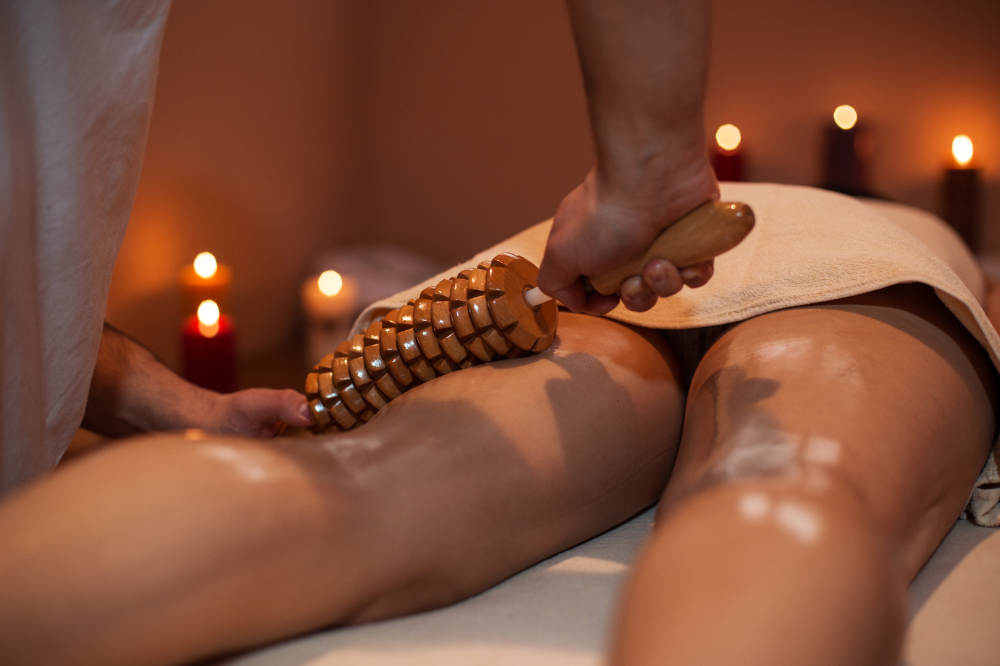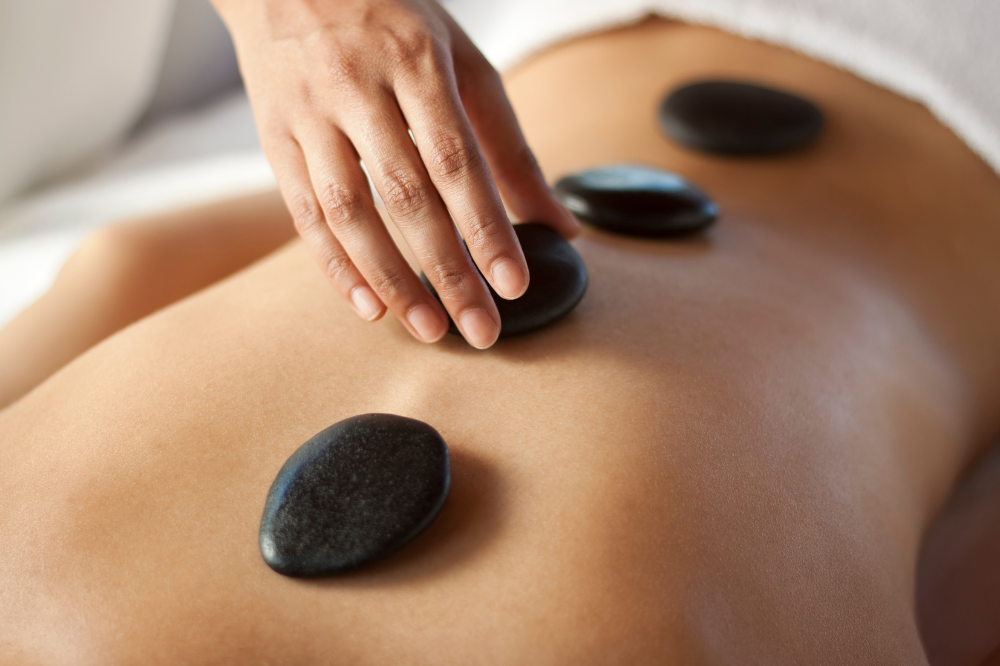What is Medicare?

Medicare is a federal health insurance program that is available to people aged 65 and over, as well as to some younger people with disabilities. The program is divided into four parts: Part A covers hospitalization, Part B covers outpatient care, Part C offers private health insurance options, and Part D covers prescription drugs. Each part of Medicare has different eligibility requirements and covered benefits. For example, most people who are enrolled in Medicare Part A do not have to pay a premium, while those who are enrolled in Part B typically do. In general, Medicare provides coverage for a wide range of medical services, but there are some exclusions and limitations.
For instance, Medicare does not cover long-term care or dental care. As people age and their health needs change, they may need to enroll in different parts of Medicare or purchase supplemental insurance to fill any gaps in coverage.
Introduction to massage therapy and Medicare coverage
Massage therapy is a form of alternative medicine that has been used for centuries to relieve pain and stress. The therapist uses their hands to apply pressure and Stroke, the muscles and soft tissues of the body. Massage therapy is effective in treating a variety of conditions, such as tension headaches, carpal tunnel syndrome, and fibromyalgia. In addition, massage therapy can also help to improve sleep quality and reduce anxiety.
Medicare covers massage therapy for beneficiaries who have a qualifying condition, such as chronic pain or stiffness. To receive coverage, beneficiaries must first get a referral from their doctor. For more information about massage therapy and Medicare coverage, please contact your local Medicare office.
Various Types of Massage Therapy

Massage therapy services are designed to provide a massage that will help you with a specific problem or area of focus. There are many different types of massage therapy, and each one has its benefits.
Swedish massage is one of the most common types of massage therapy. It uses long, flowing strokes to massage the superficial layers of the muscles. This type of massage is often used to relax the body and relieve muscle tension.
Deep tissue massage is another common type of massage therapy. It uses more pressure than Swedish massage, and it targets the deeper layers of muscle tissue. This type of massage can be used to treat chronic pain, injuries, and muscle tension.
Sports massage is a type of massage that is designed to prevent or treat injuries that are associated with sports. It can also be used to improve performance and relieve muscle tension. Trigger point massage is a type of massage that focuses on specific areas of Muscle pain or tightness. This type of massage can be used to treat headaches, TMJ, carpal tunnel syndrome, and other conditions.
Prenatal massage is a type of massage that is specifically designed for pregnant women. It can help to reduce stress, relieve anxiety, and ease pregnancy-related discomforts such as back pain and swelling.
Reflexology is a type of massage that focuses on specific points on the feet, hands, or ears. It is based on the belief that these points are connected to different organs and systems in the body. This type of massage can be used to promote relaxation and well-being.
Shiatsu is a Japanese form of massage that uses pressure and finger strokes on the body. It is based on traditional Chinese medicine and is often used for stress relief and relaxation.
A Thai massage is a unique form of massage that combines stretching and acupressure techniques. It is often used to relieve stress, improve flexibility, and reduce pain.
When choosing a type of massage therapy, it is important to consult with a qualified professional to find one that best meets your needs.
What are the benefits of massage therapy?
There are many benefits to massage therapy, including reducing stress, improving circulation, and relieving pain.
1. Massage therapy can help to reduce stress.
Stress can hurt our overall health and well-being. It can cause tension headaches, insomnia, and anxiety. Massage therapy can help to reduce stress by promoting relaxation. Studies have shown that massage therapy can decrease cortisol levels, which is the hormone that is released in response to stress.
2. Massage therapy can improve circulation.
Poor circulation can lead to many problems such as fatigue, muscle cramps, and varicose veins. Massage therapy can help to improve circulation by increasing blood flow and lymphatic drainage. This can help to improve overall energy levels and reduce pain.
3. Massage therapy can relieve pain.
Whether you are dealing with acute or chronic pain, massage therapy can help to provide relief. Massage can help to relax the muscles and increase circulation, which can reduce pain and inflammation. Massage therapy is a safe and effective way to treat many different types of pain.

4. Massage therapy can improve flexibility.
If you are feeling stiff and tight, massage therapy can help to improve your flexibility. Massage can help to loosen the muscles and connective tissue, which can make it easier to move your body. Improved flexibility can also lead to reduced pain and improved range of motion.
5. Massage therapy can boost immunity.
Massage therapy can help to boost your immunity by stimulating the lymphatic system. This system helps to remove toxins and waste products from the body. Massage can also help to reduce stress, which can impact the immune system.
6. Massage therapy can improve digestion.
If you are struggling with digestive issues, massage therapy can help to improve your digestion. Massage can help to stimulate the digestive system and increase blood flow to the area. This can lead to improved digestion and a reduction in bloating and gas.
7. Massage therapy can ease headaches.
If you suffer from tension headaches or migraines, massage therapy can help to provide relief. Massage can help to relax the muscles and reduce inflammation. Massage therapy is a safe and effective way to treat headaches without the use of medication.
8. Massage therapy can lower blood pressure.
High blood pressure can lead to many health problems such as stroke and heart disease. Massage therapy can help to lower blood pressure by promoting relaxation. Studies have shown that massage therapy can decrease both systolic and diastolic blood pressure.
9. Massage therapy can improve sleep quality.
If you are struggling with insomnia, massage therapy can help to improve your sleep quality. Massage can help to promote relaxation and reduce stress. This can lead to improved sleep quality and fewer sleepless nights.
10. Massage therapy can promote overall health and well-being.
Massage therapy can provide a wide range of health benefits. Massage can help to reduce stress, improve circulation, relieve pain, and boost immunity. Massage therapy is a safe and effective way to improve your overall health and well-being.
These are just a few of the many benefits of massage therapy. If you are looking for a way to improve your health and well-being, consider scheduling a massage. Massage therapy is a safe and effective way to promote overall health and wellness.
Does Medicare cover massage therapy?
Many people are surprised to learn that Medicare does not cover massage therapy. However, there are a few circumstances in which Medicare will cover massage services. If you are receiving physical therapy that includes massage, Medicare may cover the cost of the therapist’s services.
In addition, if your doctor prescribes therapeutic massage as part of your treatment for a specific medical condition, Medicare may provide coverage. However, if you simply want to receive a relaxing massage, you will need to pay for the service yourself. While it may be disappointing to learn that Medicare does not cover massage therapy, there are still ways to get the treatments you need without breaking the bank.
Many insurance plans offer coverage for therapeutic massage, and many massage therapists offer discounts to seniors. With a little bit of research, you should be able to find an affordable way to get the massages you need.
How can I get coverage for massage therapy under Medicare?
Many people are now turning to massage therapy as a way to relieve pain and improve their overall health. If you are considering massage therapy, you may be wondering if Medicare will cover the cost. The answer depends on the type of Medicare plan you have. If you have a Medicare Advantage plan, coverage for massage therapy is generally not included. However, some private insurance companies offer medicare services that do cover massage therapy. If you have Original Medicare, massage therapy is considered an outpatient service and is not covered.
However, if your doctor prescribes massage therapy as part of a treatment plan for a specific condition, such as arthritis, it may be covered under Medicare Part B. So if you’re considering massage therapy, be sure to check with your doctor and your Medicare plan to see if it’s covered.
Are there any other options for getting coverage for massage therapy?

While many health insurance plans do not cover massage therapy, there are several other options for obtaining coverage. Some employers offer health benefits that include massage therapy, and some states have programs that provide coverage for low-income residents. In addition, some massage therapists offer discounts to customers who pay cash or who purchase a package of sessions in advance. As a result, there are several ways to obtain coverage for massage therapy, even if health insurance does not cover it.
What to Expect During a Massage Therapy Session
Most massage therapy sessions last for about an hour. The therapist will usually start by asking you about any areas of pain or discomfort you are experiencing. They may also ask you about your medical history and any medications you are taking. This information will help the therapist determine which type of massage would be most beneficial for you.
During the massage, the therapist will use a variety of techniques to manipulate the muscles and soft tissues in your body. These techniques may include kneading, circular motions, tapping, and long strokes. You should feel relaxed and comfortable during the massage. If at any time you feel pain or discomfort, you should let the therapist know so they can adjust their technique accordingly.
After the massage, the therapist will usually give you some time to rest and relax. They may also provide you with some tips on how to reduce stress and promote relaxation in your everyday life.
How to Find a Qualified Massage Therapist
There are many benefits to receiving regular massages, from improved circulation and flexibility to reduced stress and tension. When choosing a massage therapist, it is important to find someone who is qualified and experienced. A good place to start is by asking for recommendations from friends or family members. Once you have a few names, check out the therapist’s website or social media page to get a sense of their style and approach. It is also important to make sure that the therapist is licensed and insured. Once you have narrowed down your choices, schedule a consultation with each therapist to see if they are a good fit for you. With a little effort, you can find a qualified massage therapist who will help you achieve your desired results.
Things to consider while selecting a massage therapist.

When looking for a massage therapist, there are a few things you should keep in mind.
First, consider what type of massage you are interested in. There are many different types of massage, such as Swedish massage, deep tissue massage, and shiatsu massage. Once you know what type of massage you want, you can narrow down your search to therapists who specialize in that type of massage.
Next, consider the therapist’s experience and training. It is important to find a therapist who has experience treating the type of condition or injury you have. You will also want to make sure the therapist is properly trained and certified to ensure they are providing safe and effective treatment.
Finally, consider your budget when selecting a massage therapist. Massage therapy can be expensive, so you will want to make sure you choose a therapist who is within your price range.
By keeping these factors in mind, you can be sure to find a massage therapist who is right for you.
Things to consider while selecting a massage therapy coverage plan.
1. Make sure the coverage plan you select covers the type of massage therapy you need.
2. Make sure the coverage plan you select covers the number of sessions you need.
3. Make sure the coverage plan you select covers the location of your massage therapy sessions.
4. Make sure the coverage plan you select covers the cost of your massage therapy sessions.
5. Make sure the coverage plan you select covers the frequency of your massage therapy sessions.
6. Make sure the coverage plan you select covers the duration of your massage therapy sessions.
7. Make sure the coverage plan you select covers any additional services you may need, such as transportation to and from your massage therapy sessions.
8. Make sure the coverage plan you select is accepted by your massage therapist.
9. Make sure your coverage plan is compatible with your health insurance coverage.
10. Make sure the coverage plan you select meets all of your needs and expectations.
How does medicare supplement insurance cover massage therapy services?
Medicare supplement insurance plans help cover some of the costs associated with massage therapy services. Typically, these plans will cover a portion of the cost of the massage itself, as well as any related services such as tips or supplies. As with all forms of insurance, coverage may vary depending on the specific plan you have selected. Be sure to check with your insurer to see what type of coverage is available for massage therapy services under your particular plan.
Types of massage therapy services
There are many different types of massage therapy services available. Physical therapy massage involves the manipulation of soft tissue to help relieve pain and improve the range of motion. Therapeutic massage is designed to promote relaxation and ease stress and tension. Chiropractic services focus on the treatment of musculoskeletal problems. Occupational therapy uses massage to help people recover from injuries or disabilities and improve their ability to perform daily activities. Each type of massage therapy service has its unique benefits, so it is important to choose the one that best meets your needs.
Outpatient physical therapy
Outpatient physical therapy is an important part of the rehabilitation process for many patients. By providing targeted exercises and activities, outpatient physical therapy can help patients regain strength and movement while reducing pain. In addition, outpatient physical therapy can help to improve balance and coordination, making everyday activities easier. For many patients, outpatient physical therapy is an essential step on the road to recovery. Through customized treatment plans, outpatient physical therapists can help patients achieve their rehabilitation goals.
Occupational physical therapy
Occupational physical therapy is a branch of rehabilitation medicine that helps patients regain the ability to perform daily activities. also known as work therapy or job-related therapy, occupational therapy can help injured or ill workers return to their jobs and improve their quality of life. The main goal of occupational physical therapy is to help patients regain the ability to perform everyday tasks, such as dressing, bathing, and cooking. The therapist will design an individualized treatment plan based on the patient’s needs and abilities. Therapies may include exercises, stretching, and massage.
In addition, the therapist may teach the patient how to use adaptive equipment to make daily activities easier. Occupational physical therapy can be an essential part of a worker’s recovery from an injury or illness.
Alternative treatment if I can't get massage therapy by Medicare?
While massage therapy is an excellent way to reduce pain and improve overall health, it is not always covered by Medicare. If you find yourself in this situation, there are a few alternative treatments that you can explore. Chiropractic care and acupuncture are both effective methods of pain relief that are often covered by Medicare.
If you are interested in exploring more natural methods of treatment, herbal supplements and homeopathic remedies can also be helpful. Ultimately, the best course of action will depend on your individual needs and health condition. However, by doing some research and talking to your doctor, you should be able to find an alternative treatment that will work for you.
Final Thoughts
That’s a lot of information to digest, but we hope you now have a better understanding of what Medicare is, the different types of massage therapy available, and how to go about getting coverage for massage therapy services. If you still have questions after reading this blog post, be sure to check out our other posts on massage therapy and Medicare. And as always, if you need help finding a qualified massage therapist or enrolling in a plan that covers your sessions, our team is here to assist you.











